Documenta 15 review: social practice, controversy and food for thought
Mired in evolving controversy, Documenta 15 has raised critical questions about transparency, accountability and creative freedom. Emily McDermott travels to Kassel to explore how an edition filled with social practice art urges active participation and throws global power structures into sharp relief
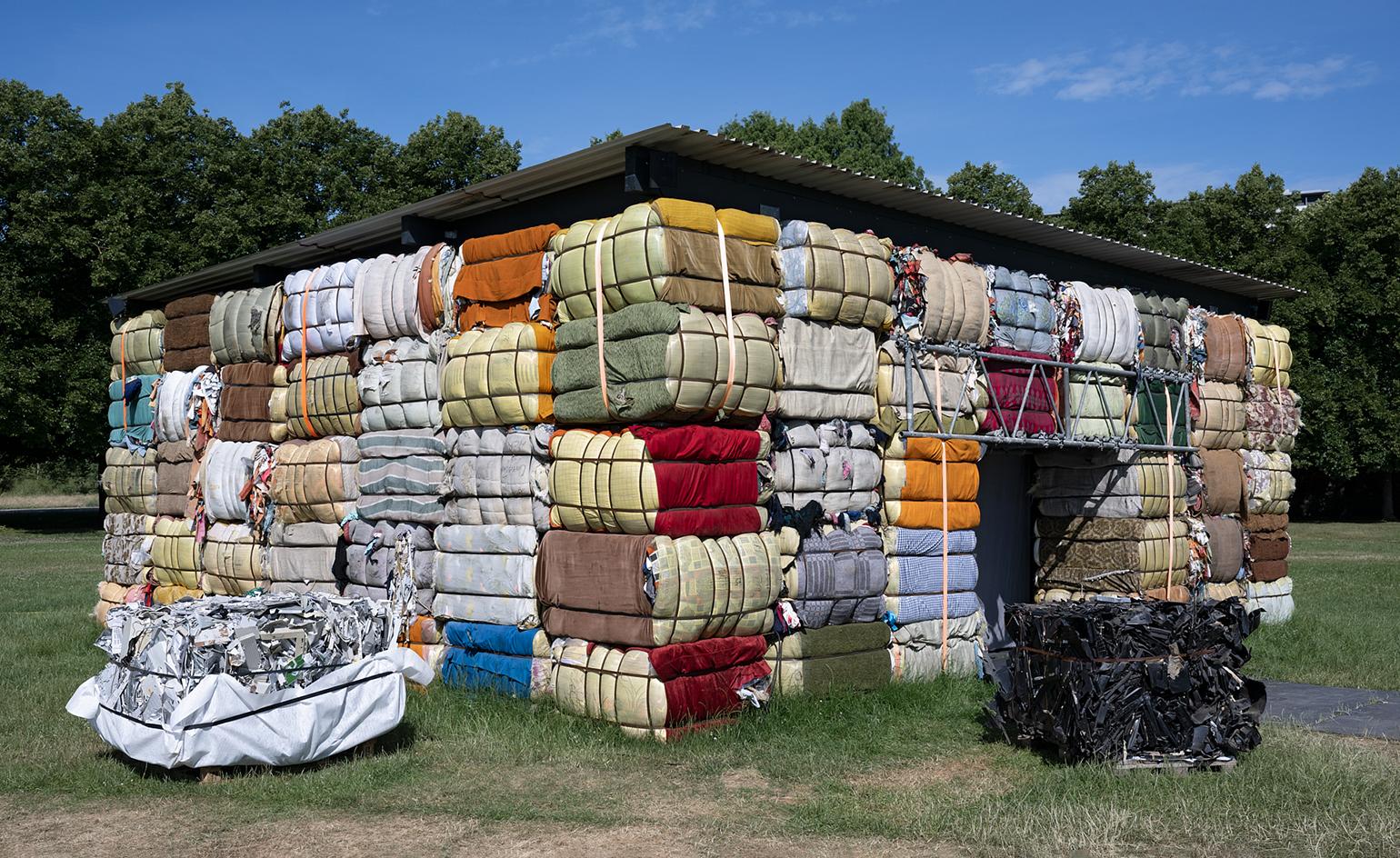
What did the ocean say to the beach? Nothing. It just waved.’ So said an artist sitting across from my assistant in the Fridericianum, a museum in Kassel, Germany. On the wall behind them hung a handwritten sign reading ‘Free Dad Jokes.’ After the joke, we sat down across from another artist. As she sketched us, we perused books about events organised in Indonesia by Hysteria, the collective the artist is part of. On the table between us sat additional publications and an iPad playing an Indonesian news segment. From the table hung a sign: ‘Free Portrait Sketch’s [sic].’ To the left, another collective gave away sticky rice topped with soybean powder. To the right, a stand offered toothpicks jabbed through gouda cheese cubes and green grapes.
This was an event organised by educational platform Gudskul, and one of more than 35 events happening the weekend we were in town to see Documenta 15 – a quinquennial exhibition in central Germany that draws international and regional crowds and is known for curatorial positions that reflect or even predict the zeitgeist. Unlike previous editions of Documenta, the artistic director appointed for 2022 was a collective, ruangrupa, rather than an individual curator. The Jakarta-based non-profit is dedicated to promoting artistic ideas in various contexts through an interdisciplinary approach, where art meets social science, politics, technology, and more. With this ethos in mind, they built the foundations of Documenta on the core values and ideas of lumbung, the Indonesian term for a communal rice barn – first by inviting five collaborators to become the artistic team, together with whom they then recruited 14 collectives, organisations, and initiatives to become ‘Lumbung Members’. Each of the member groups subsequently engaged more collectives, many of whom then used their budgets to invite others to join their processes. The result? A sprawling web of collective artistic and social practices that activate 32 venues and public spaces in what can only be described as a 100-day-long, somewhat ad hoc festival. In other words, it’s a far cry from any kind of carefully curated, fixed exhibition.
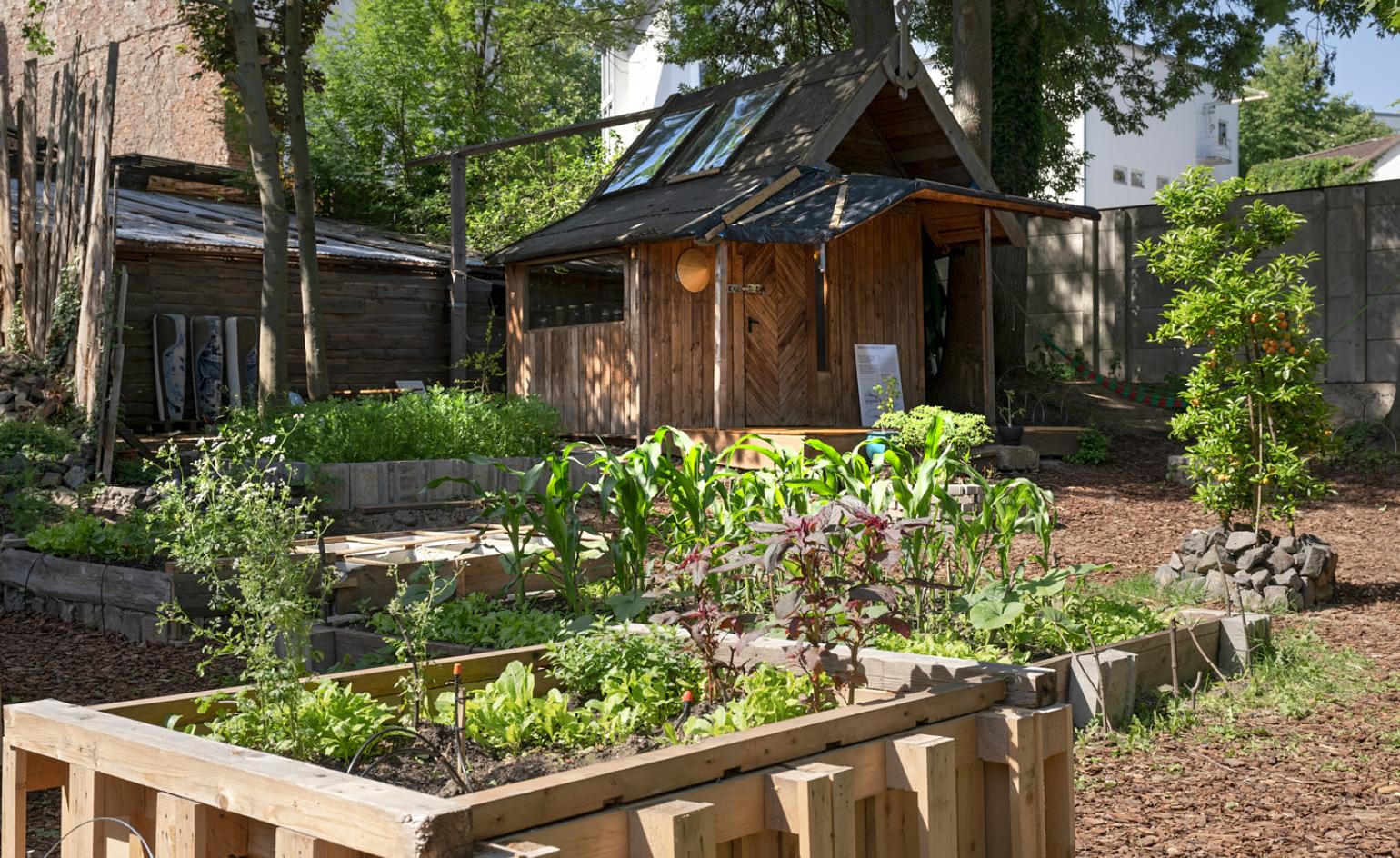
Documenta fifteen: Nhà Sàn Collective, Tuấn Mami, Vietnamese Immigrating Garden, 2022, installation view, WH22, Kassel.
Throughout the venues, social-practice-based projects take centre stage, with collectives presenting both documentation of previous activities as well as live programming. A particular highlight is Nhá Sàn Collective’s garden at the venue WH22. Here, the Vietnamese group is cultivating migratory plant species in a garden built with resources and contributions from Vietnamese immigrants in Germany, who can also donate or ask to receive seeds from the ‘seed library,’ housed in a wooden shed. When I visited, 16 people had helped build the garden, 36 had donated seeds or plants, and 50 had received them. At Hübner areal, a massive disused factory, the Guangzhou-based collective Boloho offers a Chinese buffet in the former cafeteria on the first floor, where they’re also filming and live-streaming a sitcom.
Meanwhile, in one room on the ground floor, three dancers were giving an improvised performance, soundtracked by live djembes (or at least djembe-style drums), part of a programme hosted by the Mali-based Fondation Festival sur le Niger. Next to them stood a giant sphere made from and surrounded by clay bricks. This backdropped a proverbial path to an ‘office’ installed in an adjacent room. Here, a representative of the Indonesian Jatiwangi art Factory offered information about the destruction of village structures and industrialisation of agriculture, including deforestation, of land on Java. With the idea to beat developers at their own game and to help preserve disappearing Indonesian social and cultural infrastructures, visitors were invited to purchase a 4x4-metre plot of land in an effort to create the world’s first collectively owned forest (in turn, the land would no longer be available to developers). In addition to the land, stakeholders also receive their own terracotta brick and an NFT proof-of-purchase certificate.

Documenta fifteen: Jatiwangi art Factory, Clay Workshop, 2022, Hübner-Areal, Kassel, June 13, 2022.
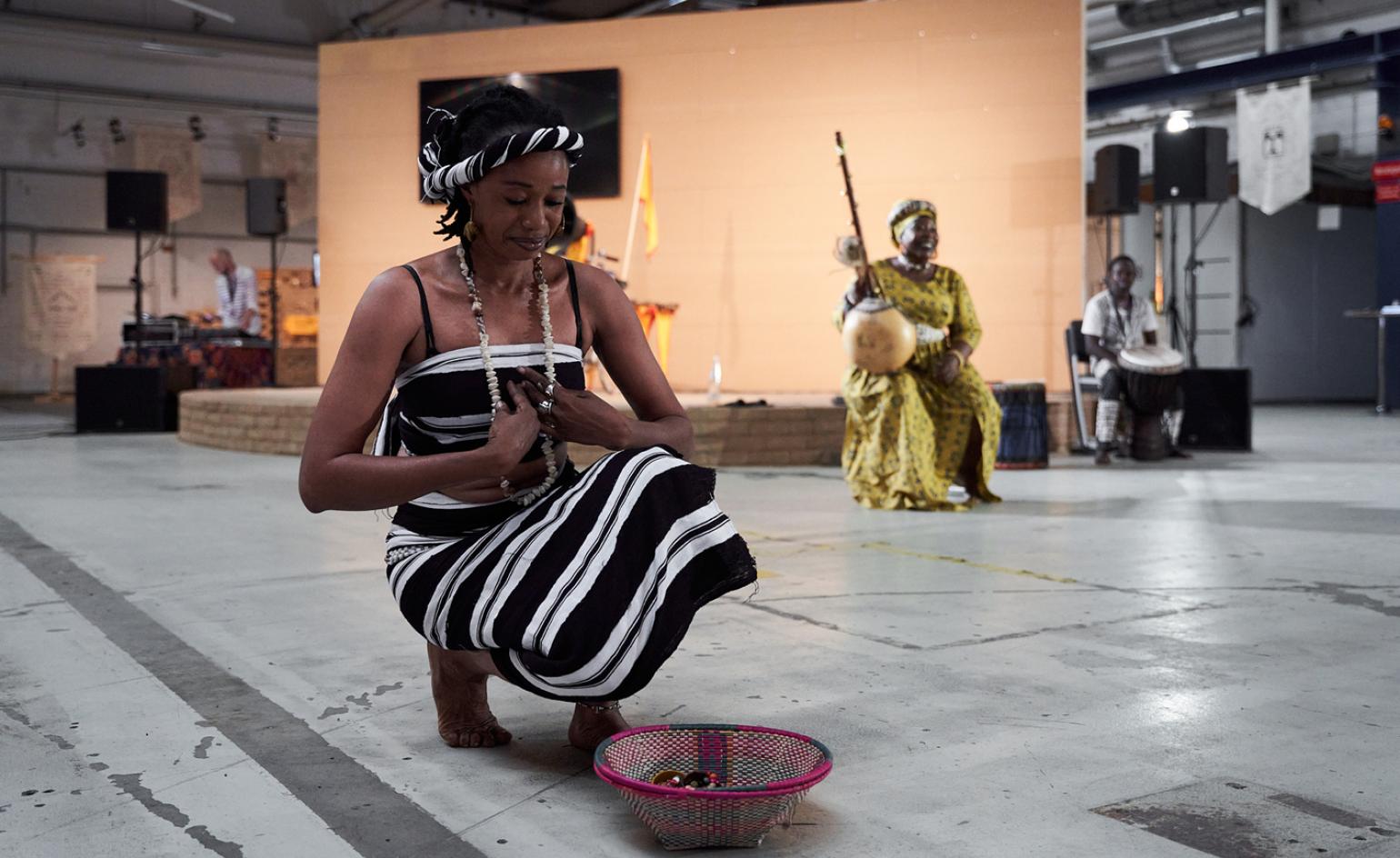
Documenta fifteen: Fondation Festival sur le Niger: Amaichata Salamata & Mama Koné & Djoulaye Samuel Coulibaly & Tieble Traoré, Activation of the Maaya Bulon: Storytelling and Dancing, Live Playing/ Storytelling, Hübner areal, Kassel, June 3, 2022
As is often the case at Documenta, a number of noteworthy projects are also located in Karlsaue, a state park. This year, finding the Argentine group La Intermundial Holobiente’s project – at the site of a compost heap – is a task in and of itself, so when we finally rounded the correct corner, walked through some trees and into a clearing, the scene was stunning and the journey proved worth it: a semi-transparent banner painted with trees wafted in the breeze among the trees themselves, supported by two giant white helium-filled balloons. Beyond this, a small wooden trailer housed a book written and edited polyphonically among the collective, an additional 14 artists and writers, and non-human collaborators. Nearby, in a greenhouse, we walked around the stacked trunks of beetle-infested trees, while soundscapes from Colombian rainforests echoed throughout – an installation part of a larger programme hosted by the Latin American group Más Arte Más Acción.
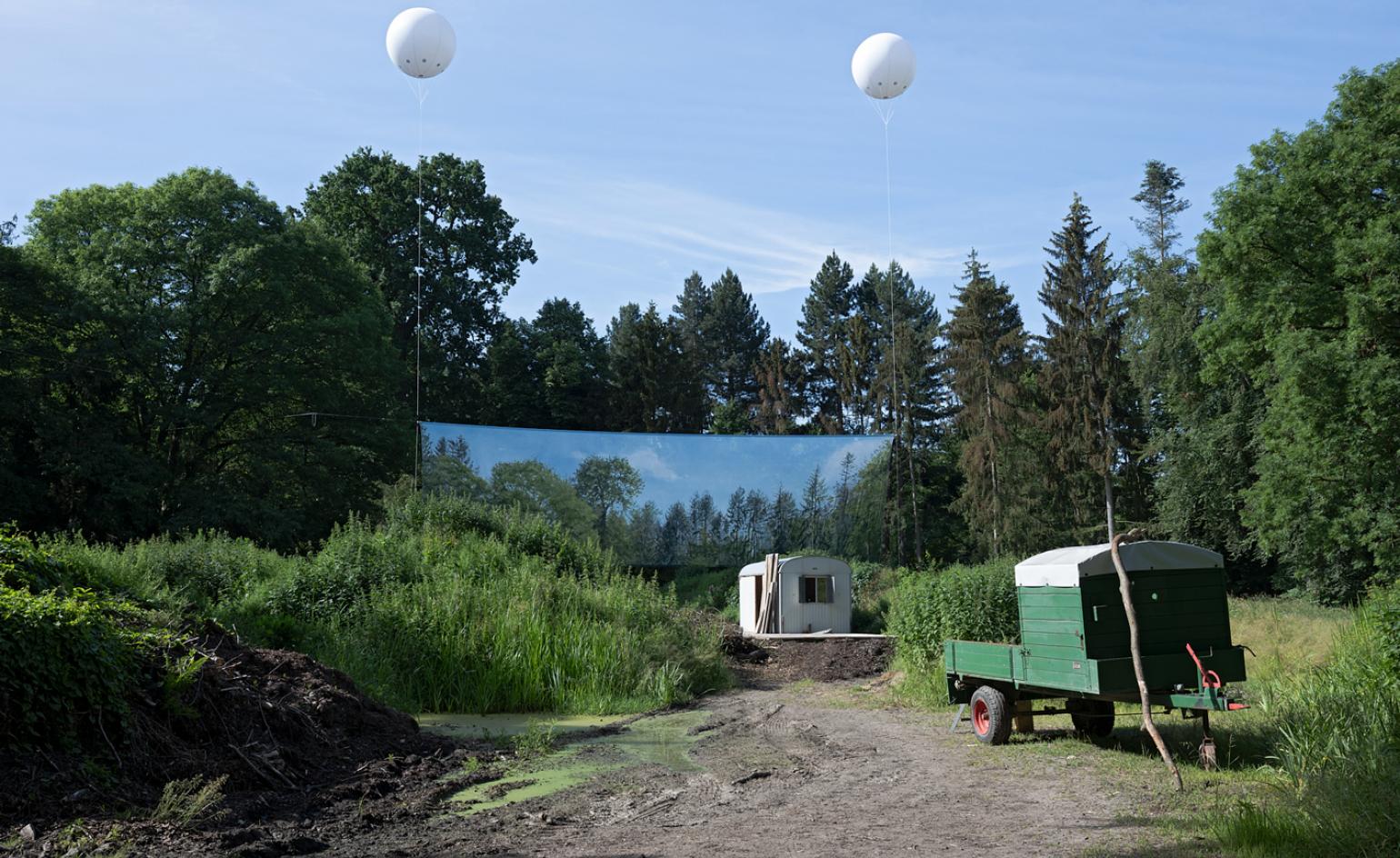

Documenta fifteen: La Intermundial Holobiente, Theaterschlag, 2022, The Holobiente Trail, 2022, installation view, Compost heap (Karlsaue), Kassel, June 14, 2022
Elsewhere in the park is Nest Collective’s Return to Sender (2021/2022), an installation made of trash: e-waste has been sorted by colour to create monochromatic freestanding cubes, while discarded textiles have been tightly bound, bundled, and stacked to create an enclosure.
Inside plays Return to Sender – Delivery Details (2022), a documentary-style video about the lack of dignity felt when wearing – and other social and economic roles of – second-hand clothing in Nairobi, Kenya, where the collective is based. These three pieces, together, speak loudly about countries in the Global North literally shipping off problems to the Global South and the ramifications of such destructive practices.
Receive our daily digest of inspiration, escapism and design stories from around the world direct to your inbox.
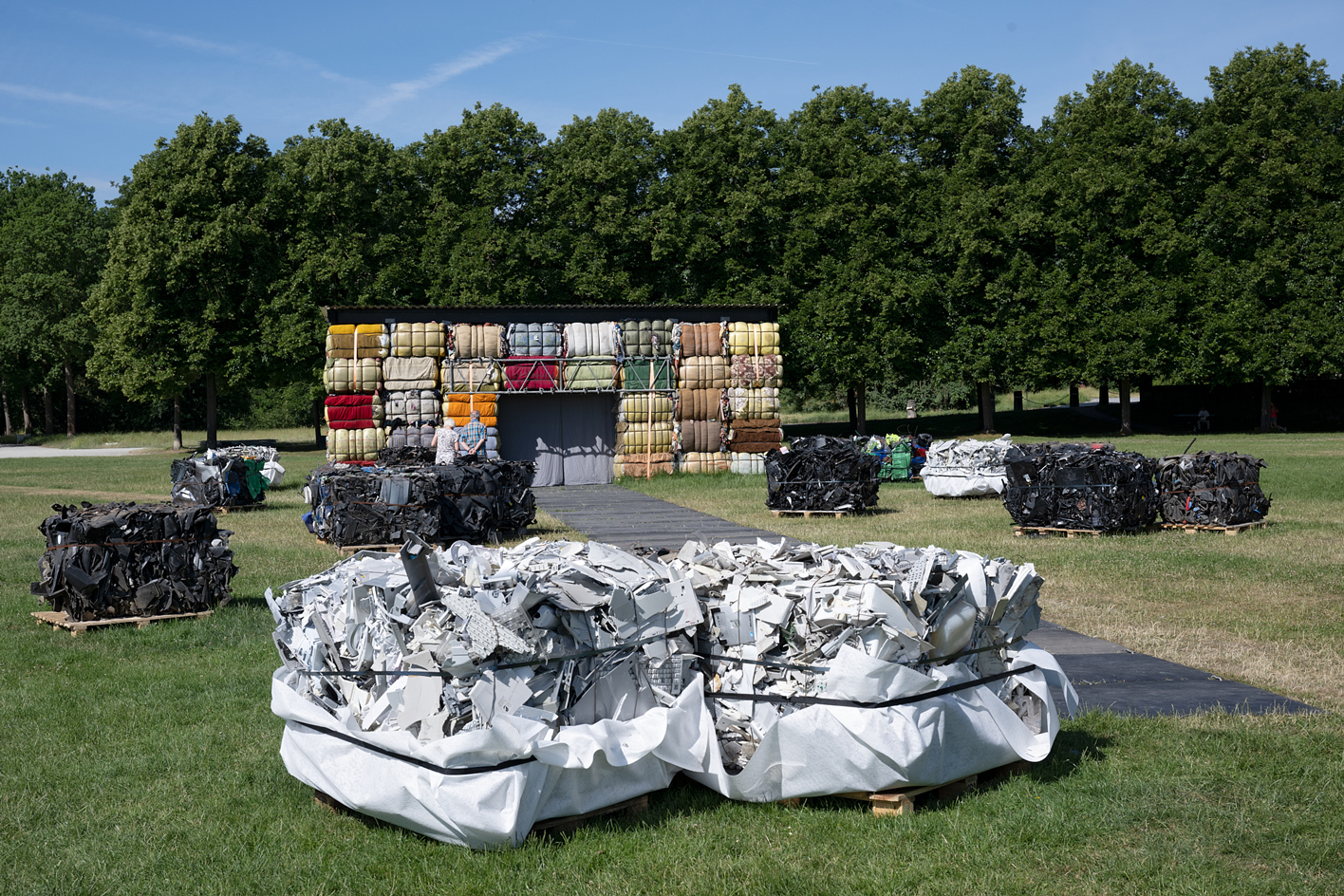
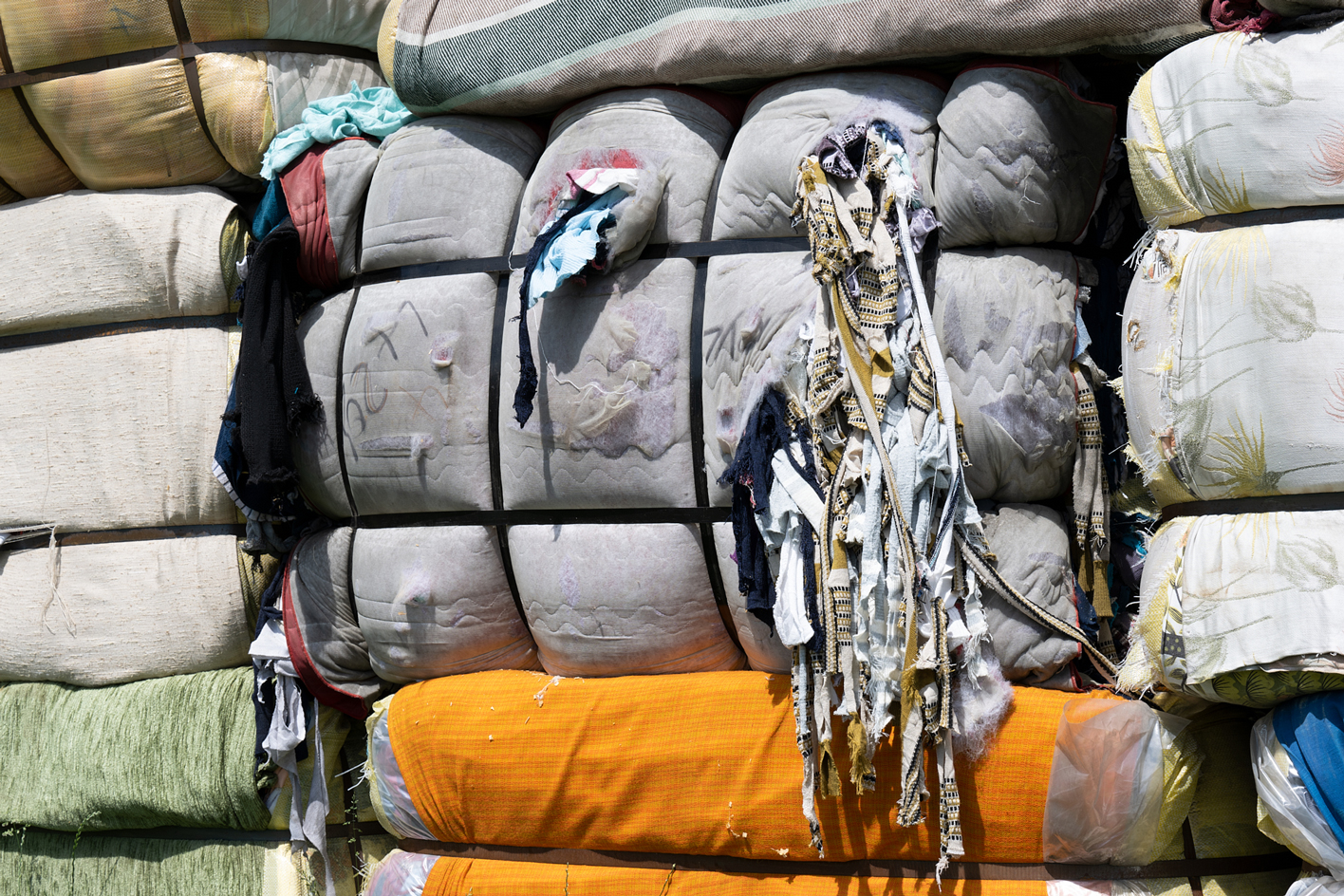
Documenta fifteen: The Nest Collective, Return To Sender, 2022, installation view (detail), Karlswiese (Karlsaue), Kassel, June 14 2022.
Nest Collective’s installation is an outstanding example of the few aesthetic, static, and object-based works that exist in what is primarily a living, constantly evolving affair. Another notable work was Inland and Hito Steyerl’s collaborative immersive installation titled Animal Spirits and staged in the metaverse. However, due to the ongoing antisemitism scandal, which can be read about here (and has since prompted the resignation of Documenta’s director general Sabine Schormann), Steyerl requested her work to be removed.
Elsewhere, Port-au-Prince-based group Atis Rezistans | Ghetto Biennial created site-specific sculptures and installations that turn St Kunigundis, an early-20th-century Roman Catholic Church into a site of reflection – on global class politics within the art world, Haitian histories and folklore, and the lumbung spirit of collaboration. Along with their accompanying programme of performances, screenings, and discussions, this intervention felt like a curated exhibition in and of itself.
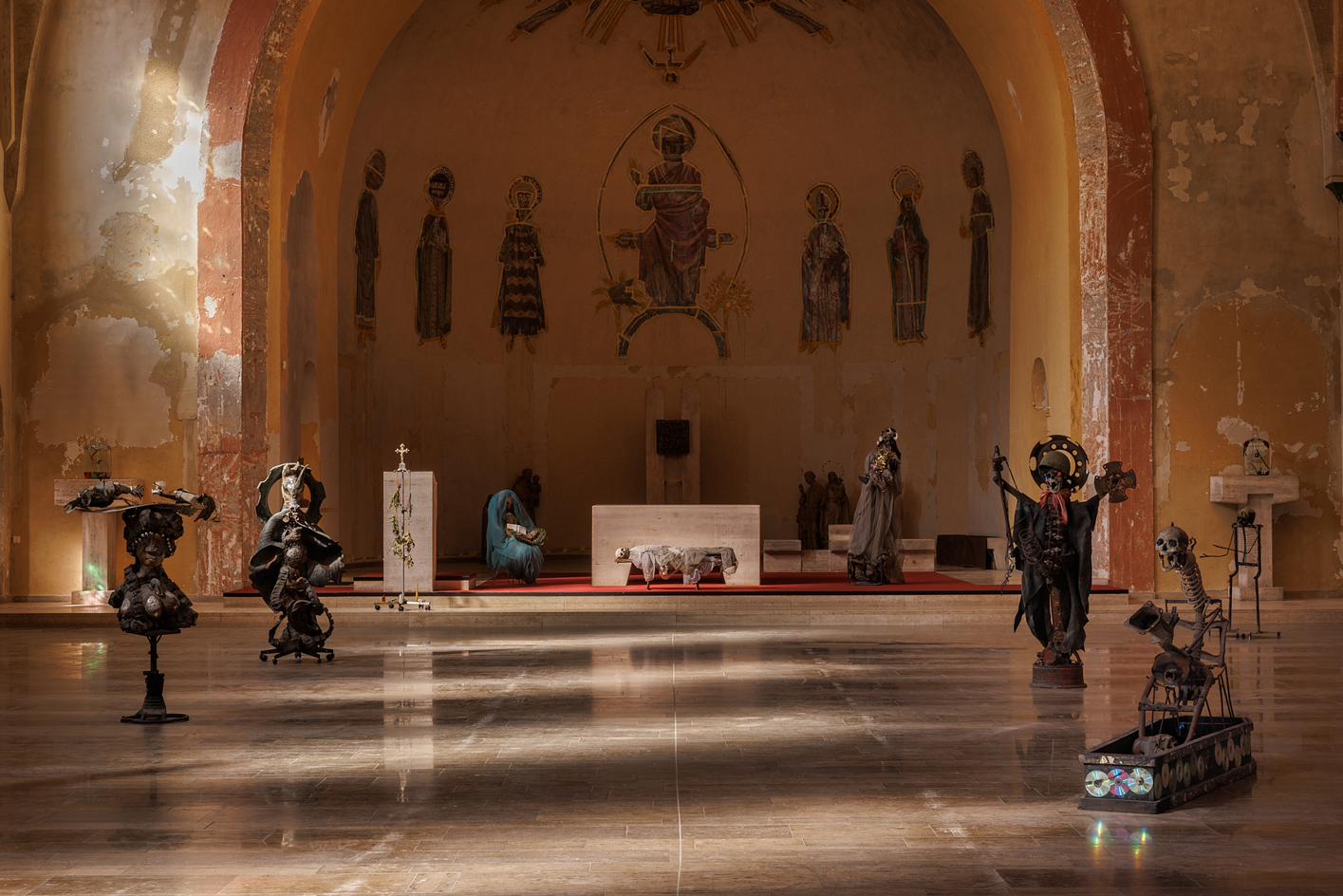
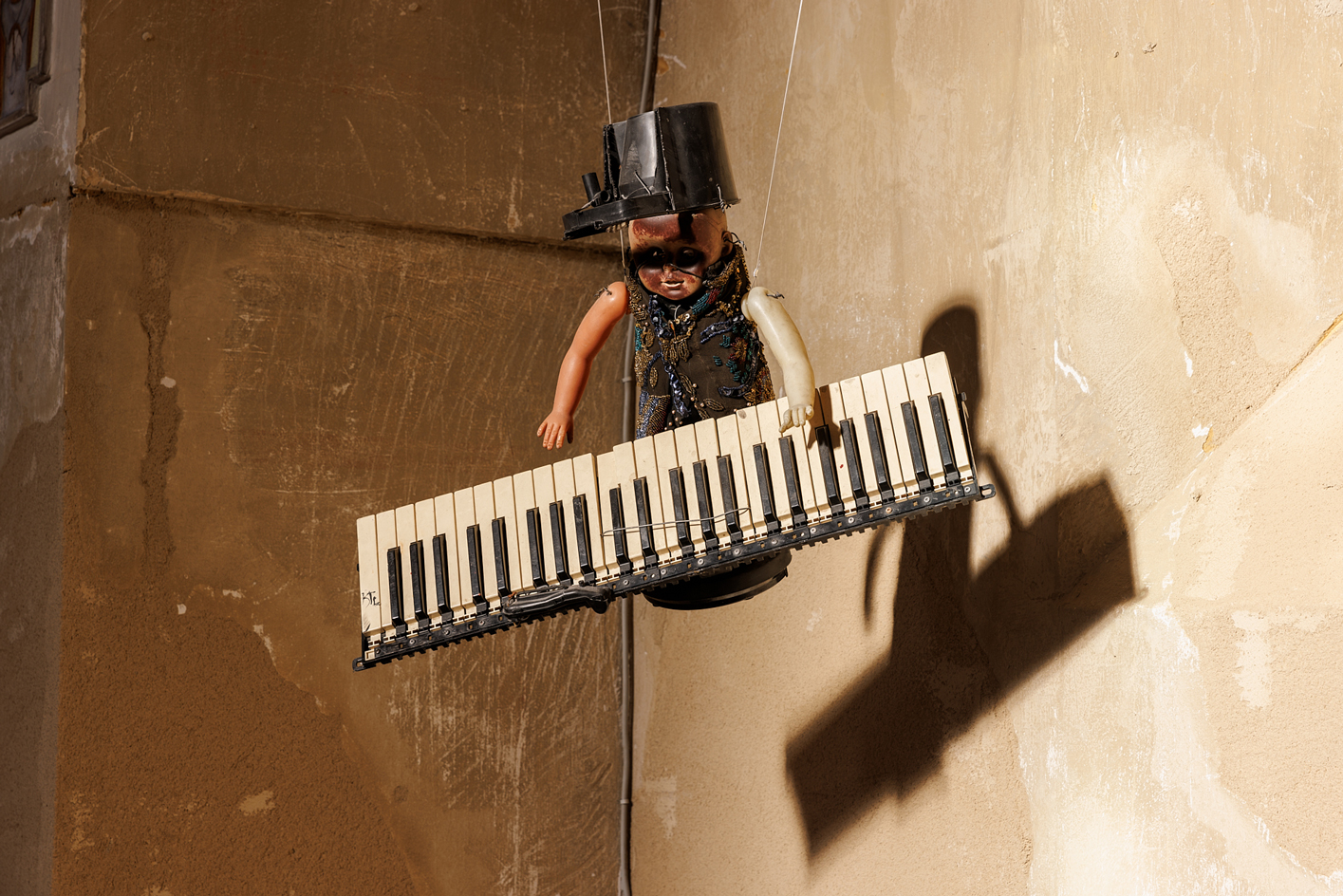
Top and above: Documenta fifteen: Atis Rezistans | Ghetto Biennale, Studio Verve Architects, Vivian Chan, Martina Vanin, The Floating Ghetto, 2022, installation view, St. Kunigundis, Kassel, June 14, 2022.
While certain projects, such as the Atis Rezistans | Ghetto Biennial presentation and those in the park, felt thoughtfully placed and well understood, other aspects of this edition of Documenta admittedly sounded better in theory than in practice. Back in the free marketplace at the Fridericianum, I couldn’t help but notice that those who sat for sketches before and after us did not engage with the artist nor the books she offered; rather, they chatted amongst themselves, waiting for their free portrait. Without even looking at what they were about to eat, let alone speak to the artist manning the stand, I watched people take a portion of soybean-flavoured sticky rice, put it in their mouth, make a face, and find the nearest napkin. It was a free market in which artists from the Global South laboured for a predominantly white, European audience and received, literally, nothing in return.
It’s significant that these collective practices have been given such autonomy and ample space in a place where they’ve hardly been represented or worked. But when cross-cultural exchange and collaboration is supposedly the point and no one is talking across the tables, such efforts risk being turned on their heads, thereby reinforcing problematic power structures. The 100-day festival indeed has a lively, encouraging spirit and invites viewers to reposition their perception of what art is and can be, but to do so, visitors must not only accept the invitation but also participate fully. From my perspective, understanding and engaging in lumbung requires visiting for far more than a weekend, conversing and lingering with no regard for time.
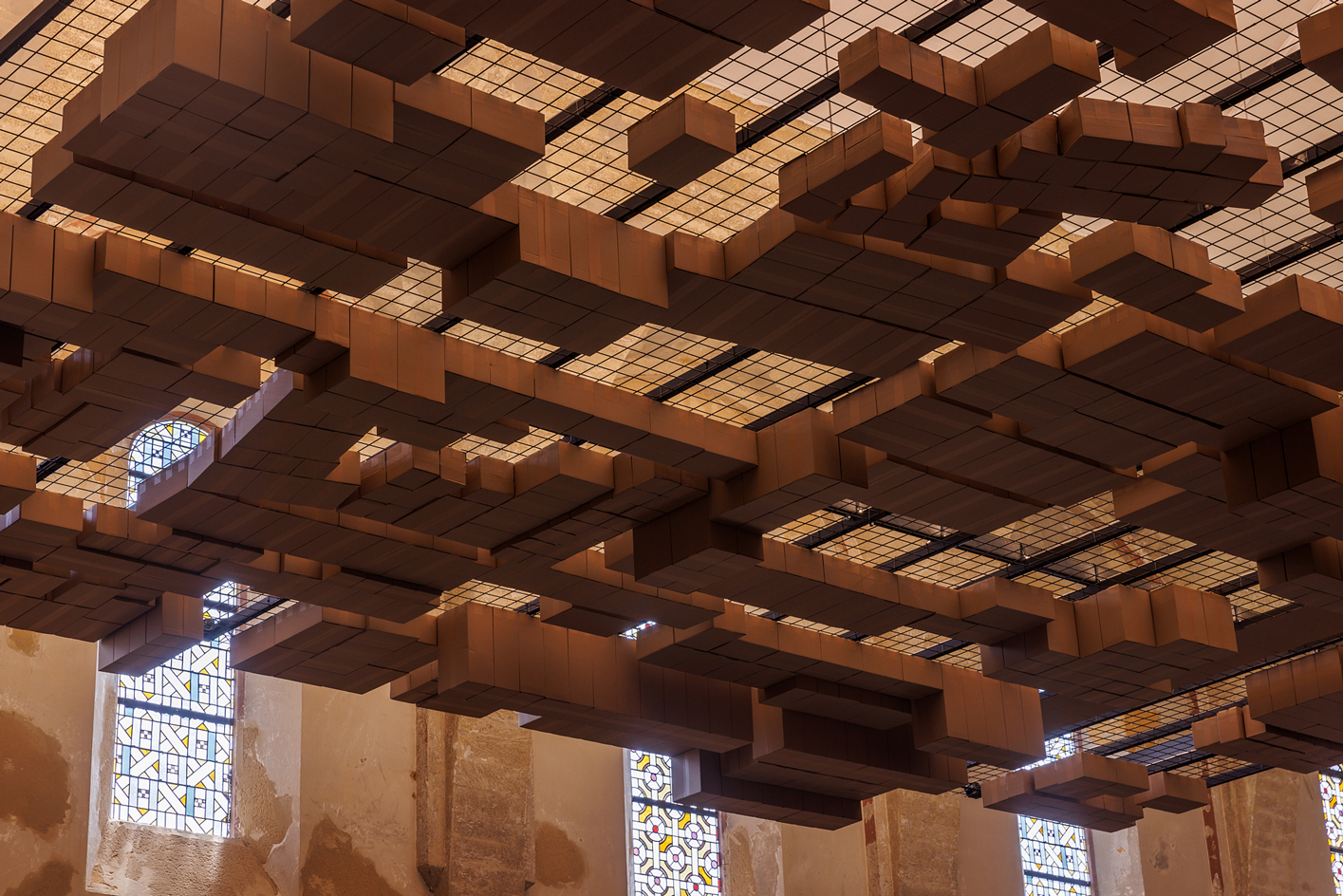
Documenta fifteen: Atis Rezistans | Ghetto Biennale, Studio Verve Architects, Vivian Chan, Martina Vanin, The Floating Ghetto, 2022, installation view, St. Kunigundis, Kassel, June 14, 2022
INFORMATION
Documenta 15 runs until 25 September 2022 in Kassel, Germany. documenta-fifteen.de
-
 Terrified to get inked? This inviting Brooklyn tattoo parlour is for people who are 'a little bit nervous'
Terrified to get inked? This inviting Brooklyn tattoo parlour is for people who are 'a little bit nervous'With minty-green walls and an option to 'call mom', Tiny Zaps' Williamsburg location was designed to tame jitters
-
 Let’s hear it for the Chopard L.U.C Grand Strike chiming watch
Let’s hear it for the Chopard L.U.C Grand Strike chiming watchThe Swiss watchmaker’s most complicated timepiece to date features an innovative approach to producing a crystal-clear sound
-
 Form... and flavour? The best design-led restaurant debuts of 2025
Form... and flavour? The best design-led restaurant debuts of 2025A Wallpaper* edit of the restaurant interiors that shaped how we ate, gathered and lingered this year
-
 Rolf Sachs’ largest exhibition to date, ‘Be-rühren’, is a playful study of touch
Rolf Sachs’ largest exhibition to date, ‘Be-rühren’, is a playful study of touchA collection of over 150 of Rolf Sachs’ works speaks to his preoccupation with transforming everyday objects to create art that is sensory – both emotionally and physically
-
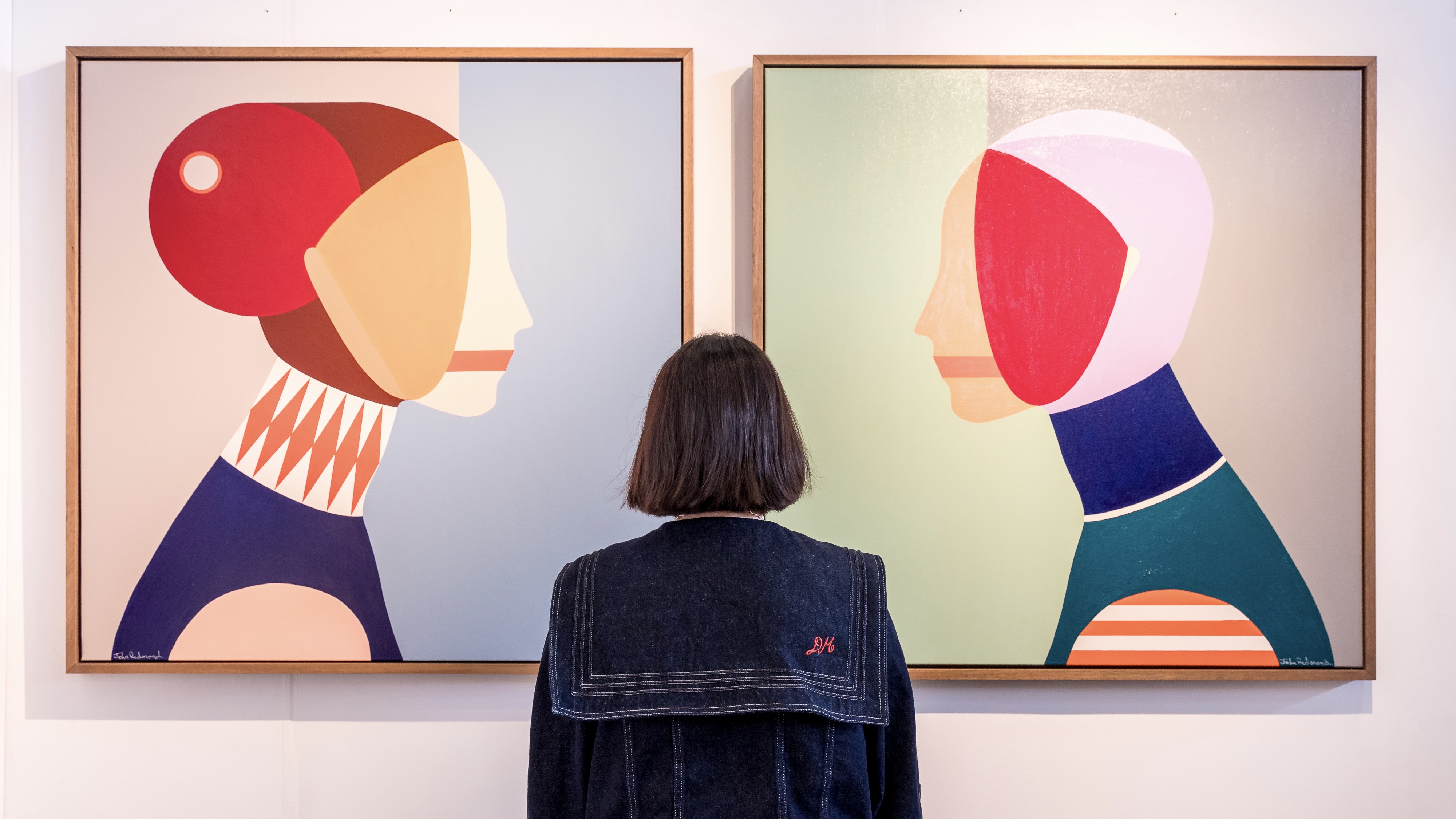 The alternative art fairs championing emerging artists
The alternative art fairs championing emerging artistsThe lower barrier to entry to these smaller and specialist art fairs make them hubs of grassroots creativity, allowing emerging names to establish a foothold in the industry
-
 Take a rare chance to see the astonishing Ringier Collection of artworks in Düsseldorf
Take a rare chance to see the astonishing Ringier Collection of artworks in DüsseldorfFrom Barbara Kruger to Sylvie Fleury: publishing mogul Michael Ringier opens his private art collection to the public, sharing 500 works, and tells us what makes great art
-
 MK&G’s ‘Glitter’ exhibition: a brilliant world-first tribute to sparkle and spectacle
MK&G’s ‘Glitter’ exhibition: a brilliant world-first tribute to sparkle and spectacleMK&G’s latest exhibition is a vibrant flurry of sparkles and glitter with a rippling Y2K undercurrent, proving that 'Glitter is so much more than you think it is'
-
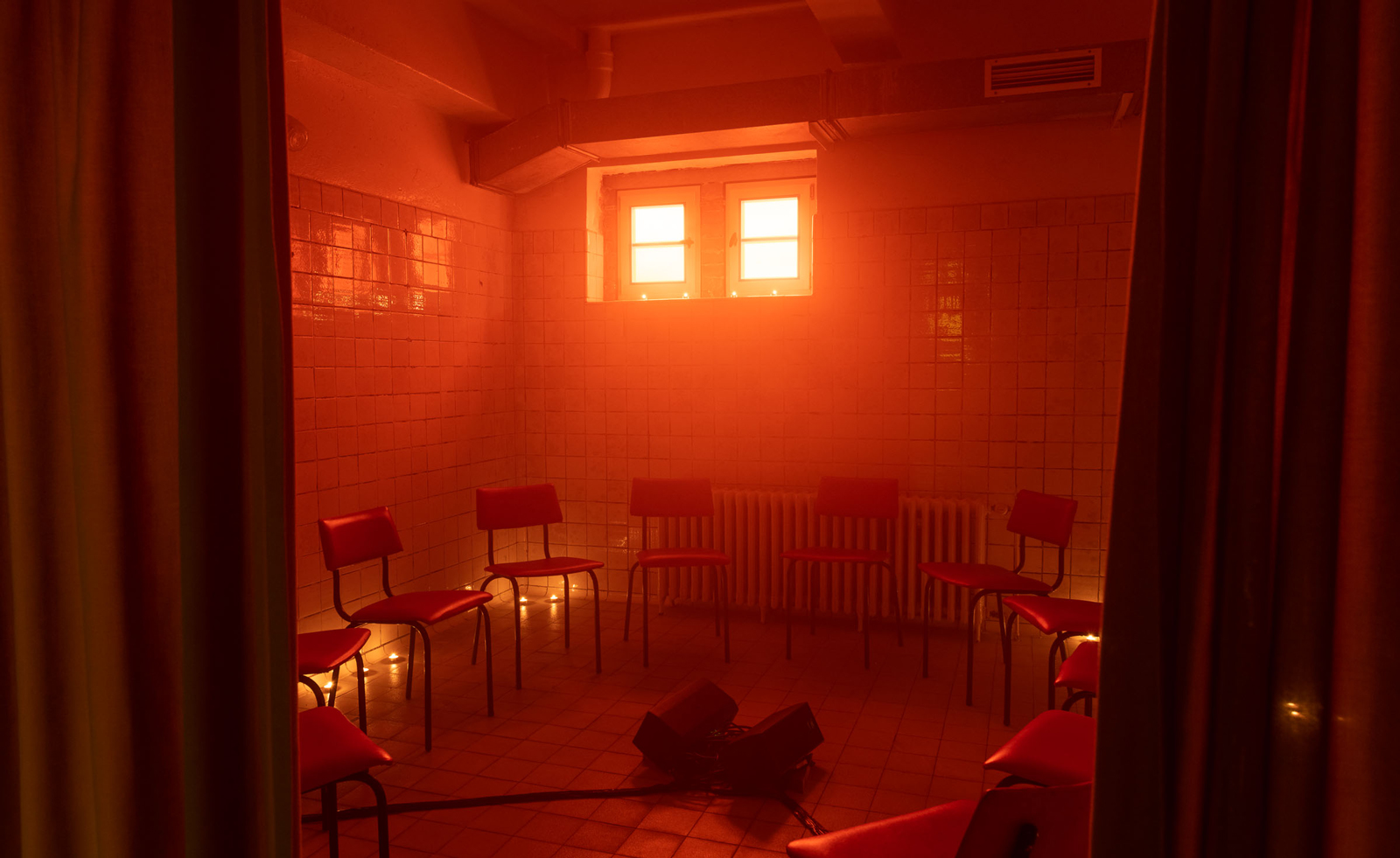 Inside E-WERK Luckenwalde’s ‘Tell Them I Said No’, an art festival at Berlin's former power station
Inside E-WERK Luckenwalde’s ‘Tell Them I Said No’, an art festival at Berlin's former power stationE-WERK Luckenwalde’s two-day art festival was an eclectic mix of performance, workshops, and discussion. Will Jennings reports
-
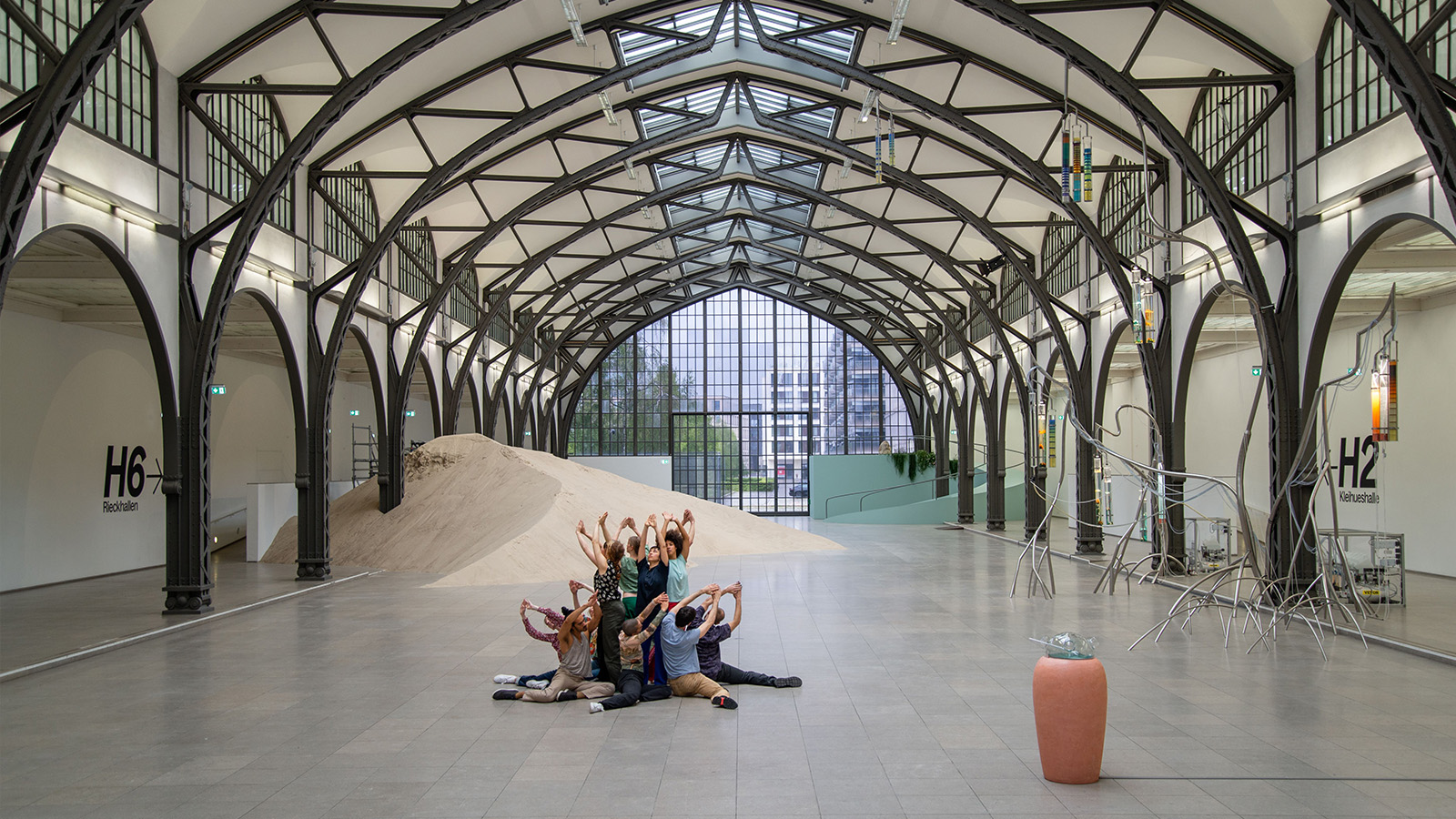 Alexandra Pirici’s action performance in Berlin is playfully abstract with a desire to address urgent political questions
Alexandra Pirici’s action performance in Berlin is playfully abstract with a desire to address urgent political questionsArtist and choreographer Alexandra Pirici transforms the historic hall of Berlin’s Hamburger Bahnhof into a live action performance and site-specific installation
-
 Edinburgh Art Festival 2023: from bog dancing to binge drinking
Edinburgh Art Festival 2023: from bog dancing to binge drinkingWhat to see at Edinburgh Art Festival 2023, championing women and queer artists, whether exploring Scottish bogland on film or casting hedonism in ceramic
-
 Last chance to see: Devon Turnbull’s ‘HiFi Listening Room Dream No. 1’ at Lisson Gallery, London
Last chance to see: Devon Turnbull’s ‘HiFi Listening Room Dream No. 1’ at Lisson Gallery, LondonDevon Turnbull/OJAS’ handmade sound system matches minimalist aesthetics with a profound audiophonic experience – he tells us more